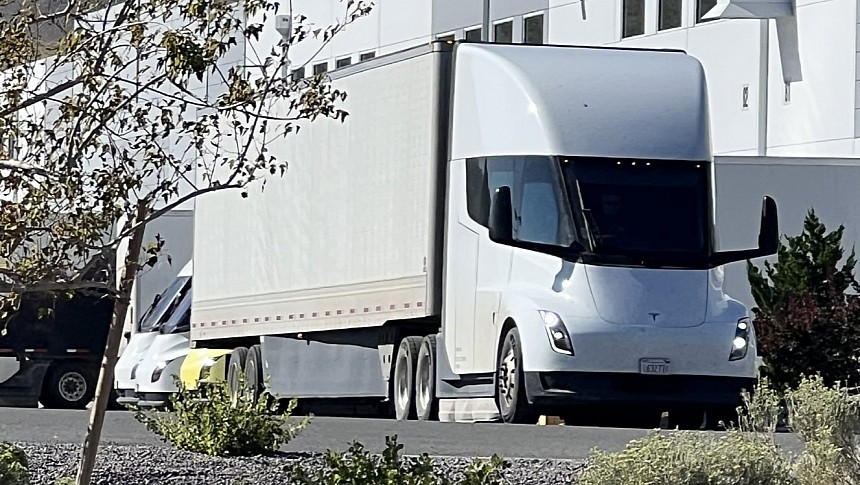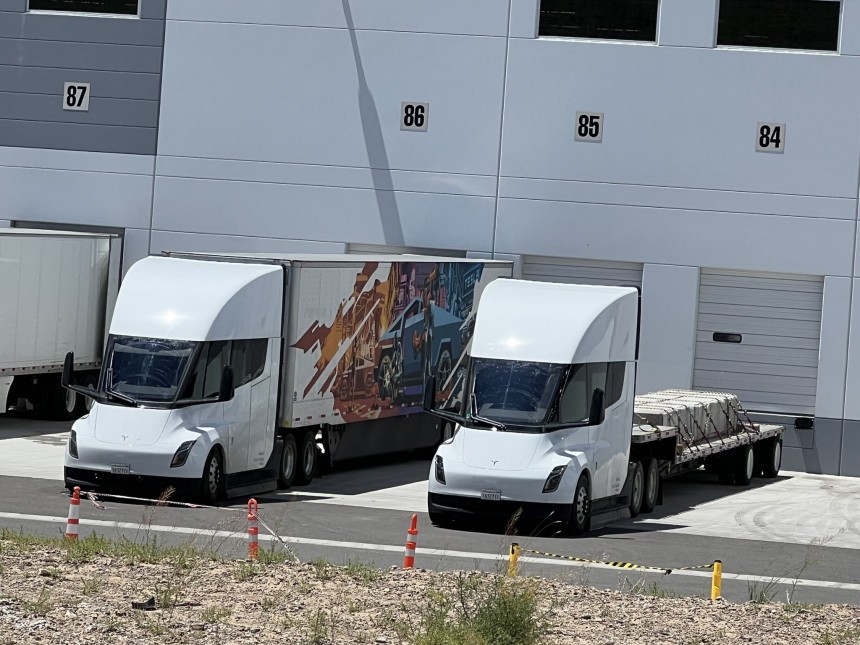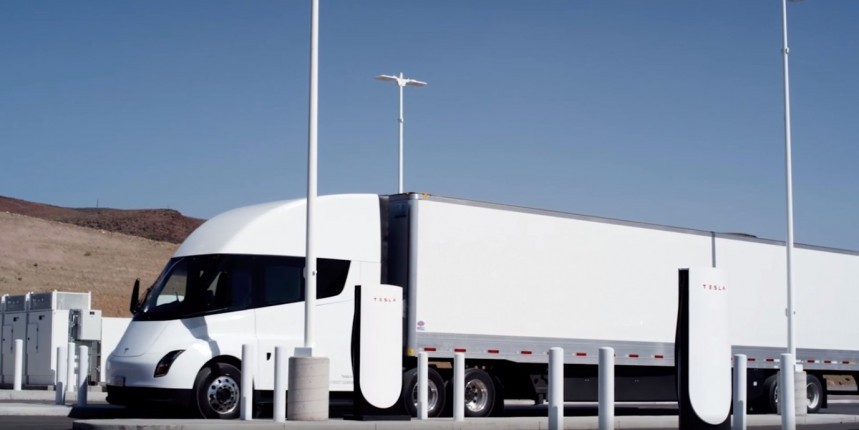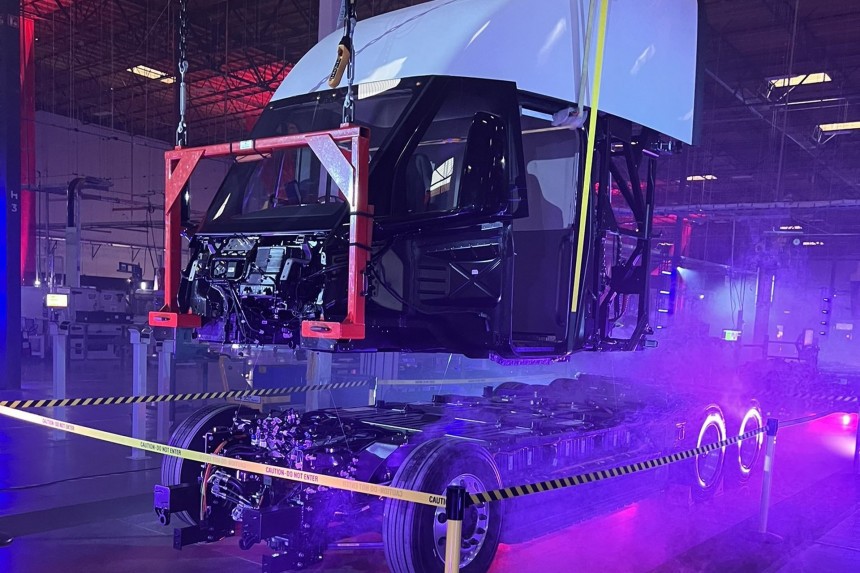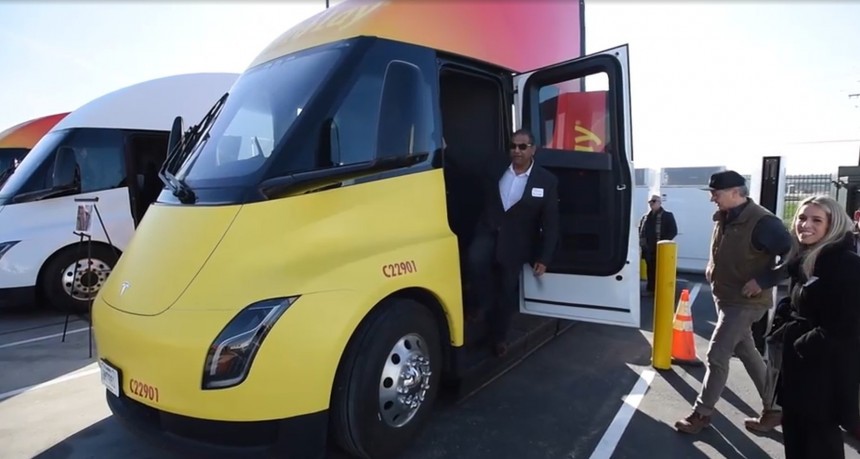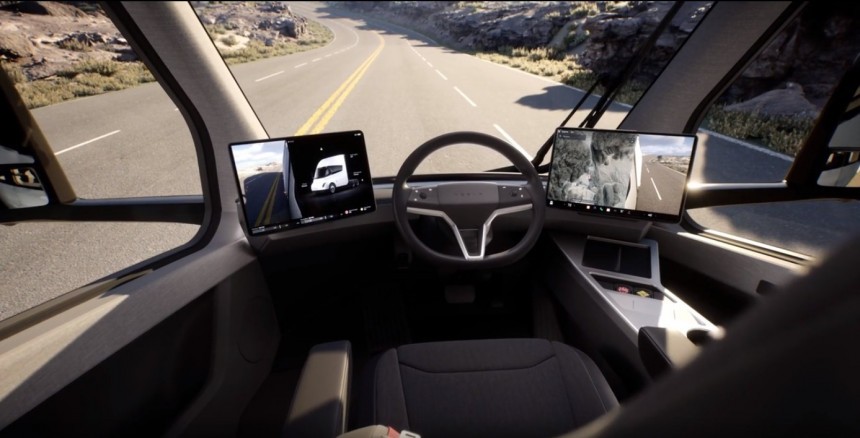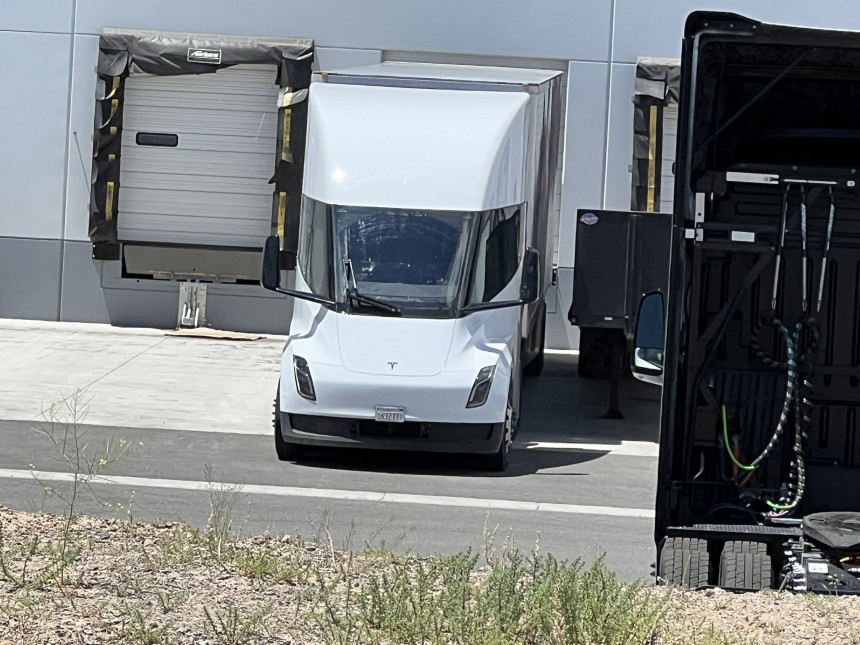Tesla Semi plans were first revealed in Elon Musk's Master Plan Part Deux in 2016, but very few people outside Tesla believed it could be done. Seven years later, the Tesla Semi has confirmed Musk's vision, although it's still not mass-produced.
Thanks to its polarizing figure and sometimes controversial actions, Elon Musk is now the most criticized person on Earth. Yet, few would disagree that he's a man with a vision. Although electric vehicles have been known for over a century, Musk's Tesla proved you can sell them profitably and at scale. His original Master Plan was so simple yet masterfully executed, turning Tesla into the EV juggernaut it is today.
In 2016, Musk released Master Plan Part Deux, a much more complex manifesto yet to be fully accomplished. One of the more essential entries in the master plan was the need to produce electric vehicles in all major market segments. Although Musk didn't think a more affordable car than the Model 3 made sense at the time, the second master plan talks about the Model 3 crossover that was later unveiled as the Model Y and "a new kind of pickup truck," which now we know it's the Cybertruck.
The plan then notices the need for two other types of new electric vehicles: heavy-duty trucks and urban transport solutions. It was the first time Musk hinted at a semi-truck development, one year before a Tesla Semi prototype was shown to the public in November 2017. We're yet to see the minivan/robotaxi that Elon Musk wanted to make, as its development is now tied to the affordable compact EV that he didn't think was needed.
Musk talked about impressive specifications, including a 620-mile (1,000-km) range when running empty and a 500-mile (800-km) range fully loaded. He also promised that the Semi Class-8 truck would have much lower operating costs than diesel trucks. Production of the revolutionary truck was slated to begin in 2019, with prices projected at $150,000 for a 300-mile variant and $180,000 for the 500-mile versions.
His skepticism was mirrored two years later by a much more famous person, Bill Gates himself. In a blog post, Gates wrote that "even with big breakthroughs in battery technology, electric vehicles will probably never be a practical solution for things like 18-wheelers, cargo ships, and passenger jets." According to Gates, big batteries will add weight, which must be overcome with even bigger (and thus heavier) batteries. He thought electricity worked for short-distance trips, but heavy, long-haul vehicles would need a different energy source.
To be sure, Gates has always made controversial statements. He is most famously known (besides creating the Windows operating system and Office productivity suite) for a quote regarding computer memory needs. According to several sources, Gates said in the 1980s that 640 KB of computer RAM should be more than enough for everybody. Although Gates later denied that he said that, this will forever remain tied to his name. When Tesla finally delivered the first Semi trucks in December 2022, Musk invited Gates to drive them himself to ensure they were real.
Much of the peculiar shape was meant to improve aerodynamics. Musk said during the 2017 unveiling event that the truck was designed like a bullet. With a 0.36 drag coefficient, the Tesla Semi was more efficient than the Bugatti Chiron, which had 0.38. The aerodynamics are crucial to achieving the incredible range figures Musk promised. If you compare the Semi with Daimler's eActros, you'll see why Martin Daum was so skeptical despite having no clue what he was talking about.
The strange cabin layout has often been criticized, not least by professional truck drivers, who considered the cabin would not accommodate their habits. The center seat wastes cabin space while offering poor visibility for overtaking other vehicles on one-lane roads. The Semi's windows don't open, so the driver has to get off every time they need to pay tolls, talk to people in gatehouses, and handle the paperwork while entering a factory or delivering anything.
Despite having a big cabin, the Tesla Semi doesn't feature a sleeper, so it's mostly a Day Cab configuration. Apart from a coat hanger and a jumper seat in the back, there's no other amenity that you could use on a long-haul journey. Everything inside is controlled via the two touchscreens, which offer all the information a truck driver might need.
Although it has been speculated that Tesla Semi will use 4680 cells, Elon Musk confirmed last year that this is not the case. The Semi will eventually move to 4680 cells as they become widely available, but for now, it is built with 2170 cells. Tesla recently announced a new 4680-cell production facility near Giga Nevada where the Semi is produced, and I can only speculate that the Semi will be the main beneficiary.
The EV maker started installing megawatt chargers at key locations to optimize charging. The Semi also uses a dedicated connector designed to withstand the high current. Based on details shared by Tesla Semi's launch partner PepsiCo, the electric Class-8 truck needs half an hour to charge the battery from near zero to 70%. Going to a full charge takes 90 minutes. Considering the 500-mile range, the Tesla Semi will not pose additional issues for truck drivers, who are required by law to take a 30-minute break after eight hours of driving. The typical distance a truck driver covers in eight hours is 400 miles.
The batteries feed two drive units, one with one electric motor geared toward efficiency (on the rearmost axle) and the other with two electric motors optimized for torque (on the other rear axle). These can also be disengaged when not used for better efficiency. Although Tesla did not publish the official specifications, it said that the Tesla Semi has roughly "three times the power of a diesel semi," which points to around 1,000 horsepower.
The fully loaded Semi needs 20 seconds to accelerate from zero to 60 mph (97 kph), while it's more like a sportscar when it's empty. It can also drive up to 60 mph up a 5% gradient, something that we've already seen in a video from the delivery event. The video shows a loaded Semi effortlessly overtaking a regular semi-trailer on the Donner Pass at a 6% incline. Tesla also promised the Semi needs less than 2 kWh per mile, and PepsiCo said the electric truck consistently consumed less than 1.7 kWh per mile during their trial.
While these figures seem impressive, Tesla's strength is in its software prowess. The Semi will offer fleet owners remote diagnosis tools, location tracking, predictive maintenance, and other features that traditional truck owners can only dream of. The comprehensive suite of active safety features also makes the Semi unique. Like modern passenger vehicles, the Semi offers automatic emergency braking, forward collision warning, and automatic lane-keeping assist, among other things.
Its automated driving systems are designed to prevent jackknifing, a term describing the unusual folding of an articulated vehicle when the heavy trailer pushes the cabin thanks to higher inertia. Like all other Tesla EVs, the Tesla Semi is also designed to offer self-driving capabilities. Tesla aims to provide unique features, such as platooning when several driverless trucks operate in an autopilot-based convoy led by a truck with a human driver.
After Tesla showed the video of a Semi making a 500-mile trip on a charge while fully loaded (GVW of 81,000 pounds/36,750 kg), some tried to demonstrate that the load was actually lighter. If that was not the case, perhaps the Semi truck is much heavier, so the combined weight reaches 81,000 pounds. To add to these speculations, Tesla offered few details to address people's questions.
During a recent Run for Less event, data from GEOTAB and the North American Council for Freight Efficiency (NACFE) confirmed the figures with the trucks in PepsiCo's fleet. One of the trucks analyzed, in particular, provided valuable data for high-uptime slip-seat applications, where multiple drivers take turns to keep the truck from idling. The Tesla Semi covered 1,600 miles in less than 48 hours, with the truck almost continuously moving except for three brief charges and two range-extending mini charges.
During the test, the Tesla Semi impressed with its capacity to take a high-power charge for an extended period. The Semi charged from 5% to 80% SOC in about an hour using the installed 750-kW charger, an impressive feat. This capability allowed the truck to keep moving at near-maximum load capacity without charging sessions impacting operations.
If we take Tesla's statements at face value, the EV maker should become the biggest American truck maker, with a planned annual production of about 50,000 Semi trucks in 2024. But to do that, Tesla needs a new production line. So far, the Semi is manufactured in an artisanal shop near Giga Nevada, and rumors confirm that production is basically halted.
Earlier this year, Tesla announced a significant investment in Nevada to build a new production line for the Semi and a 4680-cell manufacturing facility with a 100-GWh capacity. The $3.6 billion facility is yet to break ground and hopes that Semi mass production might start this year have tanked. As it is, the 50,000-unit annual target for 2024 looks increasingly unrealistic, although Tesla fans are used to such delays.
The Semi could be the most disruptive vehicle Tesla will ever produce, even more important than the elusive robotaxi that Musk dreams of. Even though the production margins on the Semi will be razor-thin, the software offerings, including FSD, will more than make up for this. Some analysts estimate that Tesla Semi will have a gross margin exceeding 40% when factoring in the software if Tesla solves vehicle autonomy.
Still, it's not only what Semi means for Tesla that's important. It's also the mission that Elon Musk lined up in his Master Plan Part Deux in 2016. Switching the transportation industry to battery electric has an incredible potential to improve climate. Studies show that heavy-duty trucks are responsible for over a quarter of all the climate pollution from transportation in the US, despite trucks being only 4% of all vehicles on the road. They're also responsible for 45 percent of the nitrogen oxide pollution and 57 percent of the fine particulate (PM 2.5) pollution in the US.
In 2016, Musk released Master Plan Part Deux, a much more complex manifesto yet to be fully accomplished. One of the more essential entries in the master plan was the need to produce electric vehicles in all major market segments. Although Musk didn't think a more affordable car than the Model 3 made sense at the time, the second master plan talks about the Model 3 crossover that was later unveiled as the Model Y and "a new kind of pickup truck," which now we know it's the Cybertruck.
The plan then notices the need for two other types of new electric vehicles: heavy-duty trucks and urban transport solutions. It was the first time Musk hinted at a semi-truck development, one year before a Tesla Semi prototype was shown to the public in November 2017. We're yet to see the minivan/robotaxi that Elon Musk wanted to make, as its development is now tied to the affordable compact EV that he didn't think was needed.
Skepticism right from the start
From the very beginning, skeptics weren't convinced of Musk's claims about Tesla Semi performance. Shortly after Tesla unveiled the Semi prototype, Daimler Trucks boss Martin Daum questioned the Semi promises. Most notably, the range was thought unreal, at least compared to what Daimler's electric trucks were capable of. "If Tesla really delivers on this promise, we'll obviously buy two trucks — one to take apart and one to test because if that happens, something has passed us by," Daum told Bloomberg in 2018.His skepticism was mirrored two years later by a much more famous person, Bill Gates himself. In a blog post, Gates wrote that "even with big breakthroughs in battery technology, electric vehicles will probably never be a practical solution for things like 18-wheelers, cargo ships, and passenger jets." According to Gates, big batteries will add weight, which must be overcome with even bigger (and thus heavier) batteries. He thought electricity worked for short-distance trips, but heavy, long-haul vehicles would need a different energy source.
To be sure, Gates has always made controversial statements. He is most famously known (besides creating the Windows operating system and Office productivity suite) for a quote regarding computer memory needs. According to several sources, Gates said in the 1980s that 640 KB of computer RAM should be more than enough for everybody. Although Gates later denied that he said that, this will forever remain tied to his name. When Tesla finally delivered the first Semi trucks in December 2022, Musk invited Gates to drive them himself to ensure they were real.
Polarizing design
Right from the first prototype, it was clear that Tesla would not produce a traditional, run-of-the-mill semi-truck. The unique shape was unlike anything people had seen before and fitted what Musk often described in terms such as "looks like the future." The wraparound windshield that extends into the doors, the center driver seat, and the lack of mirrors puzzled everyone. The mirrors returned for the production model, but the overall design and configuration remained largely unchanged.The strange cabin layout has often been criticized, not least by professional truck drivers, who considered the cabin would not accommodate their habits. The center seat wastes cabin space while offering poor visibility for overtaking other vehicles on one-lane roads. The Semi's windows don't open, so the driver has to get off every time they need to pay tolls, talk to people in gatehouses, and handle the paperwork while entering a factory or delivering anything.
Despite having a big cabin, the Tesla Semi doesn't feature a sleeper, so it's mostly a Day Cab configuration. Apart from a coat hanger and a jumper seat in the back, there's no other amenity that you could use on a long-haul journey. Everything inside is controlled via the two touchscreens, which offer all the information a truck driver might need.
Battery and drive unit configuration
The Semi has nine battery modules for the 500-mile (805-km) variant and a 1,000-volt architecture. This allows Tesla to offer different battery capacities based on customers' needs, and we can assume the 300-mile version will sport six modules. The battery packs are unique to the Semi, not made of reused parts from other Tesla models. The total capacity is unknown, although speculations put it at about 750-1,000 kWh.Although it has been speculated that Tesla Semi will use 4680 cells, Elon Musk confirmed last year that this is not the case. The Semi will eventually move to 4680 cells as they become widely available, but for now, it is built with 2170 cells. Tesla recently announced a new 4680-cell production facility near Giga Nevada where the Semi is produced, and I can only speculate that the Semi will be the main beneficiary.
The batteries feed two drive units, one with one electric motor geared toward efficiency (on the rearmost axle) and the other with two electric motors optimized for torque (on the other rear axle). These can also be disengaged when not used for better efficiency. Although Tesla did not publish the official specifications, it said that the Tesla Semi has roughly "three times the power of a diesel semi," which points to around 1,000 horsepower.
Performance and features
Several videos shared on social media show the Tesla Semi accelerating like a sports car and being able to maintain highway speeds even uphill. Tesla also promised that its electric truck would beat a diesel truck in acceleration even when two of its three electric motors break down. Of course, this should never happen, as Tesla also claimed that Semi's drive units are engineered to last one million miles.While these figures seem impressive, Tesla's strength is in its software prowess. The Semi will offer fleet owners remote diagnosis tools, location tracking, predictive maintenance, and other features that traditional truck owners can only dream of. The comprehensive suite of active safety features also makes the Semi unique. Like modern passenger vehicles, the Semi offers automatic emergency braking, forward collision warning, and automatic lane-keeping assist, among other things.
Its automated driving systems are designed to prevent jackknifing, a term describing the unusual folding of an articulated vehicle when the heavy trailer pushes the cabin thanks to higher inertia. Like all other Tesla EVs, the Tesla Semi is also designed to offer self-driving capabilities. Tesla aims to provide unique features, such as platooning when several driverless trucks operate in an autopilot-based convoy led by a truck with a human driver.
Controversies and debunking
Tesla organized the Semi delivery event on December 1, 2022, with PepsiCo as its launch partner. The food giant reportedly placed an order for 100 Semi trucks, although the deliveries were far less than that. PepsiCo would work closely with Tesla to gather feedback and help improve the truck before series production would begin. Even as the first Semi trucks started operations at PepsiCo and Frito Lay facilities in California, critics tried to convince people that Tesla's electric truck was still a fraud.During a recent Run for Less event, data from GEOTAB and the North American Council for Freight Efficiency (NACFE) confirmed the figures with the trucks in PepsiCo's fleet. One of the trucks analyzed, in particular, provided valuable data for high-uptime slip-seat applications, where multiple drivers take turns to keep the truck from idling. The Tesla Semi covered 1,600 miles in less than 48 hours, with the truck almost continuously moving except for three brief charges and two range-extending mini charges.
During the test, the Tesla Semi impressed with its capacity to take a high-power charge for an extended period. The Semi charged from 5% to 80% SOC in about an hour using the installed 750-kW charger, an impressive feat. This capability allowed the truck to keep moving at near-maximum load capacity without charging sessions impacting operations.
Production
Although the first Semi deliveries started last December, only a limited number of trucks were produced. Based on the number of Semis recalled on two occasions, there may have been less than 40 produced even though PepsiCo placed an order for 100 trucks. Tesla has many orders from other fleet operators but is not yet ready to start mass production. You may consider the partnership with PepsiCo as a trial run, with improvements implemented based on the feedback before mass production begins.Earlier this year, Tesla announced a significant investment in Nevada to build a new production line for the Semi and a 4680-cell manufacturing facility with a 100-GWh capacity. The $3.6 billion facility is yet to break ground and hopes that Semi mass production might start this year have tanked. As it is, the 50,000-unit annual target for 2024 looks increasingly unrealistic, although Tesla fans are used to such delays.
The most disruptive Tesla vehicle
Besides the 100 trucks PepsiCo pre-ordered, the Tesla Semi order books also recorded orders from Sysco (50 units), Anheuser-Busch (40 units), Walmart (130 trucks), and Pride Group Enterprises (150 trucks). These numbers are nothing compared to Tesla's production estimates, but good experience with the electric Semi will draw many other operators to the Tesla ecosystem. The EV maker also counts on the Full Self-Driving capability to turn the Semi into a gold mine.Still, it's not only what Semi means for Tesla that's important. It's also the mission that Elon Musk lined up in his Master Plan Part Deux in 2016. Switching the transportation industry to battery electric has an incredible potential to improve climate. Studies show that heavy-duty trucks are responsible for over a quarter of all the climate pollution from transportation in the US, despite trucks being only 4% of all vehicles on the road. They're also responsible for 45 percent of the nitrogen oxide pollution and 57 percent of the fine particulate (PM 2.5) pollution in the US.
